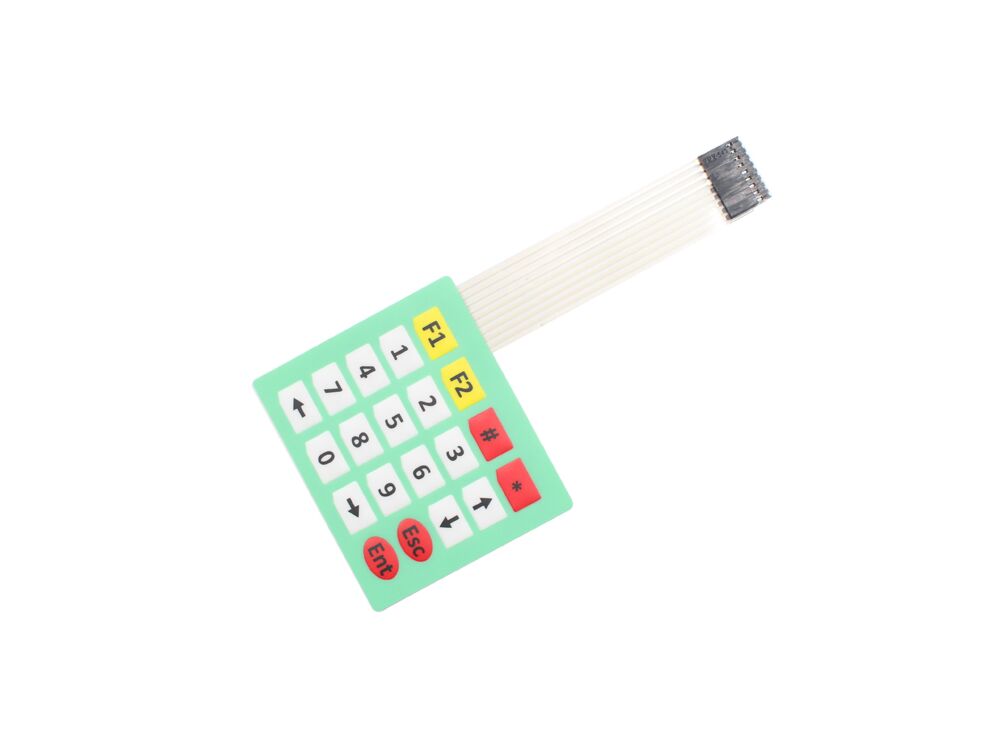Innovative Membrane Switch Solutions for Customized Control Panels
Innovative Membrane Switch Solutions for Customized Control Panels
Blog Article
Understanding Membrane Layer Switches: The Secret to Durable and Trustworthy Controls

What Are Membrane Layer Switches?
Membrane switches are an advanced remedy in the realm of user interface innovation, integrating capability and layout seamlessly. These devices function as an interface between individuals and digital systems, incorporating numerous parts right into a compact format. Normally built from versatile, slim layers of products, membrane layer buttons are created to react to touch, making it possible for customers to connect with equipment and digital tools properly.
The key components of a membrane layer switch include a printed circuit layer, graphic overlay, and a spacer layer that prevents unplanned activation. The visuals overlay can be tailored to show brand identity or user choices, boosting aesthetics while ensuring usability. Membrane layer buttons are typically utilized in various applications, consisting of clinical devices, consumer electronic devices, and commercial devices, owing to their sturdiness and resistance to environmental factors such as dampness and dirt.
One of the key benefits of membrane layer switches is their ability to hold up against damage, making them excellent for high-traffic settings. Furthermore, they are lightweight and call for very little area, enabling innovative styles in item advancement. In general, membrane layer changes stand for a functional and efficient selection for contemporary digital interfaces, weding innovation with user-centric layout principles.
Just How Membrane Switches Over Work
The operation of membrane changes joints on a simple yet efficient system that converts user input into digital signals. When a user presses the switch, the leading layer flaws, allowing a conductive element in the circuit layer to make contact with an equivalent conductive pad on the bottom of the graphic overlay.
The design of membrane switches can vary, however they often integrate domes or tactile aspects to give responses to the user, enhancing the overall experience - membrane switch. The materials utilized in membrane layer buttons, such as polyester or polycarbonate, add to their resilience and resistance to environmental aspects, consisting of dampness and dirt. Furthermore, the printed circuits are usually encapsulated, which secures them from deterioration gradually.
Benefits of Membrane Layer Buttons

In addition, membrane layer buttons are known for their resilience. Built from robust materials, they are resistant to dust, wetness, and physical wear, which substantially expands their life-span contrasted to typical mechanical switches. This resilience makes them particularly ideal for high-traffic atmospheres and applications needing long life.
One more considerable benefit is the simplicity of cleansing and maintenance. The smooth surface of membrane switches over reduces dirt build-up and is frequently unsusceptible spills, making them suitable for setups that need constant sanitization.
In addition, membrane buttons supply a streamlined profile, leading to a thinner design that can get redirected here be incorporated right important source into different devices without adding bulk. This feature not just boosts the visual appeal however additionally adds to an extra ergonomic product style.
Applications of Membrane Switches
Flexible and straightforward, membrane layer buttons discover applications throughout a vast range of sectors, consisting of clinical devices, customer electronic devices, and industrial tools. In the clinical area, these switches are integral to gadgets such as diagnostic equipment, patient monitoring systems, and infusion pumps, where integrity and simplicity of cleansing are crucial. Their ability to maintain and endure rough settings capability makes them excellent for such applications.

In consumer electronics, membrane switches are utilized in products like microwaves, washing makers, and remote controls - membrane switch. Their sleek design enables user-friendly user interfaces, enhancing the general user experience while offering resilience and resistance to tear and wear
Commercial tools also profits from membrane buttons, particularly in control panels for equipment and automation systems. These buttons provide security against dirt and dampness, ensuring regular performance in difficult settings. Moreover, their adjustable functions enable suppliers to customize them to details operational requirements, improving effectiveness and performance.
Selecting the Right Membrane Switch Over
When choosing a membrane switch, it is vital to take into consideration different aspects that affect efficiency and suitability for certain applications. The key factors to consider include environmental conditions, tactile comments, sturdiness, and design specifications.
First, examine the operating setting; switches subjected to moisture, chemicals, or extreme temperature levels call for particular materials to make certain longevity and functionality. Next, evaluate the need for responsive responses. Depending on customer communication, some applications may take advantage of a responsive action to verify activation, while others might favor a non-tactile layout for visual factors.
Resilience is one more crucial aspect; membrane switches need to be designed to withstand frequent usage, effects, and abrasion. Make sure the chosen switch can endure the anticipated lifecycle, particularly in high-usage circumstances.

Final Thought
In conclusion, membrane switches over offer as important components in the design of sturdy and reputable control systems across different sectors. The flexibility of membrane layer switches permits for tailored remedies that satisfy specific functional requirements, enhancing their significance in modern-day technology.
Membrane switches over stand for a vital facet of modern-day interface style, mixing capability with resilience in numerous applications.Membrane buttons are an innovative option in the realm of user interface innovation, incorporating performance and layout seamlessly. Generally created from flexible, slim layers of products, membrane buttons are created to react to touch, enabling customers to communicate with equipment and digital devices effectively.
The design of membrane layer buttons can differ, but they typically include domes or responsive aspects to supply comments to the individual, improving the overall experience.In conclusion, membrane switches over serve as crucial components in the design click to read more of durable and trusted control systems throughout numerous sectors.
Report this page